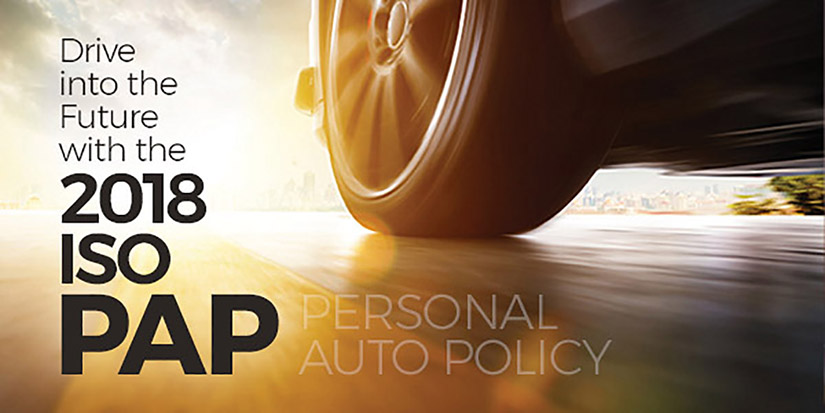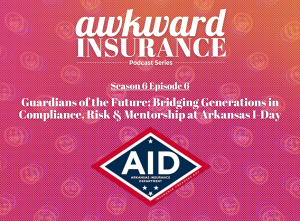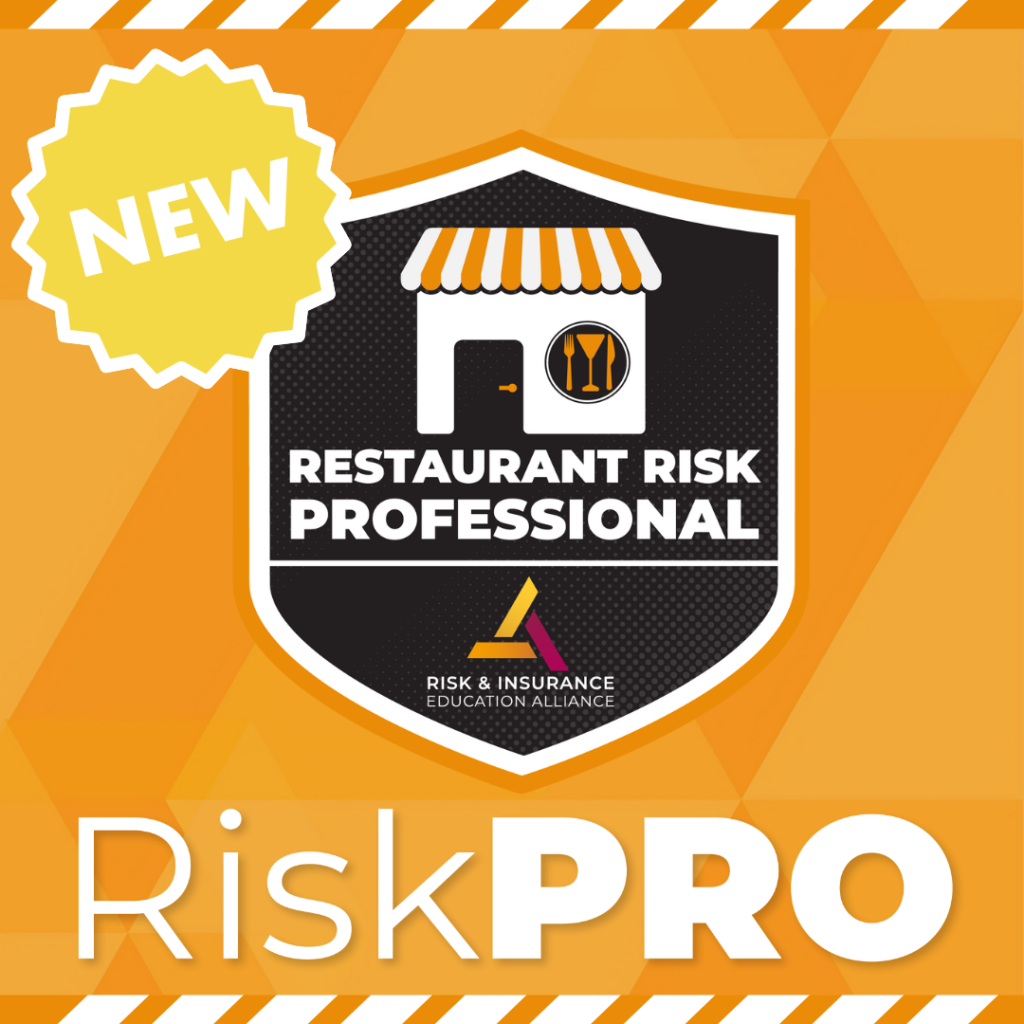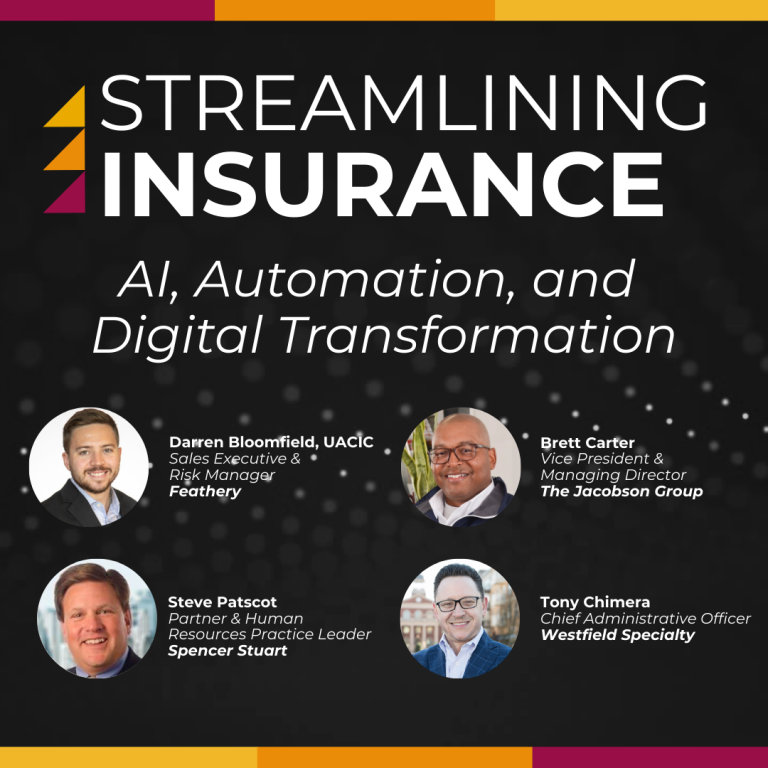One thing is for certain—Personal Lines is not static! We have seen more coverage revisions and more endorsements introduced in the past two years than in any two-year period I can remember since entering the insurance industry in 1974. Next year will be no different, as ISO recently announced the filing of a new Personal Auto Program with a proposed September 2018 effective date.
The new program includes revisions not only to the policy language, but also to 27 endorsements! Now, before you get too concerned about how this is going to impact coverage for your clients, let’s look at the big picture:
Only a few revisions are considered a reduction in coverage for clients.
Several revisions are simply moving exclusionary language from a mandatory endorsement into the policy itself, making it easier to “read” a policy.
Many revisions to current endorsements are needed because of the two points above, or simply for editorial revisions with no impact on coverage.
New coverage endorsements introduced!
Let’s look at the significant changes and how they affect coverage for your clients.
Definition of “Newly Acquired Auto”—Under the current form, an eligible replacement vehicle automatically has Part A Liability (and other coverages except Coverage For Damage To Your Auto) until the end of the policy period without notifying the insurance company of the new vehicle. Clients will now have to notify their insurance company within 14 days.
From Endorsements to Exclusions
There are three exclusionary endorsements that will be incorporated into the policy itself, eliminating the need for a separate endorsement.
Public Or Livery Conveyance Exclusion—
In October 2015, the Public Or Livery Conveyance Exclusion Endorsement (PP 23 40) was introduced to reinforce that transportation network services such as Uber, Lyft, etc., were subject to the Public Or Livery Conveyance Exclusions. All Coverage Parts in the 2018 policy will now incorporate the language of the Public Or Livery Conveyance Exclusion Endorsement, and the endorsement will be withdrawn.
In the past, the sole exception to the public or livery conveyance exclusion gave back coverage for a share-the-expense car pool. Coverage will now be provided, by way of an additional exception, for the ownership or operation of a vehicle while is it being used for volunteer or charitable purposes.
Vehicle Sharing Program Exclusion—
The new exclusion is added to all four Coverage Parts and is identical to those previously included in the Personal Vehicle Sharing Program Exclusion Endorsement (PP 23 16), which is being withdrawn.
Custom Furnishings or Equipment—
Prior to 2018, this exclusion in the policy itself only applied to pickups or vans. The Custom Equipment Exclusion Endorsement (PP 13 06) was introduced in 2009 to revise the exclusion to apply to ALL vehicles (not just pickups and vans), but only in excess of the first $1,500 of custom equipment. This endorsement language has been embedded in policy and the endorsement withdrawn.
Racing Exclusion Revised
Only one exclusion was revised—the Racing Exclusion. The racing exclusions in Part A – Liability, Part B – Medical Payments Coverage and Part D – Coverage For Damage To Your Auto have been generous in providing coverage for (by not excluding) many racing situations. After all, the exclusion only applies while the vehicle is located in a facility designed for racing and then only while competing, practicing, or preparing for any prearranged or organized racing or speed contest. The 2018 change tightens the exclusion, resulting in additional activities being excluded. The exclusion continues to apply only while the vehicle is inside a facility designed for racing; however, the verb, “participating,” joins competing, practicing or preparing, and the activity, “driver skill training or driver skill event,”joins racing or speed contest. I know of an auto dealership that rents a local racetrack every year and invites customers who purchased a car from them to come drive their new car the way it was designed to be driven. Should a loss occur while involved in this activity, coverage may now be excluded.
New Exclusion
Flying Car Exclusion—
Yes, you read it correctly. A flying car! In anticipation of increased popularity of flying cars, an exclusion is added for an exposure that is better insured on a specialty policy. The new exclusion in Parts A, B and C will apply when an insured is occupying a flying car (or roadable aircraft) and Part D will exclude loss to a flying car.
New Endorsements
Several new endorsements will be available in the 2018 auto program.
Full Safety Glass Coverage (PP 33 05)—Coverage is provided, without a deductible, for damaged safety glass on your covered auto.
Key Replacement And Related Services Coverage (PP 33 27)— This coverage may come in useful for those of us who lose our key or key fob or covered one stolen. (I may or may not have ever lost my key fob. I may or may not have had to pay $400 to replace it!) This new endorsement will pay up to the limit shown in the Declarations for that vehicle, reasonable expenses for services to gain access to your covered auto if the key or key fob is lost or stolen, and the cost of a replacement key or key fob. No deductible applies to this coverage.
Pet Injury Coverage Endorsement (PP 33 31)—With an increasing number of dogs and cats riding in our vehicles these days, this new coverage may come in handy if there is injury to our “fur baby” or “fur grandbaby.” This new endorsement pays reasonable veterinary or cremation/disposal expenses required because of bodily injury or death to a dog or cat owned by the named insured or family member. There must be Other Than Collision and Collision Coverages on at least one vehicle on the policy and the pet has to be inside a vehicle fitting the definition of your covered auto or a non-owned auto at the time of the loss. Coverage is provided, without a deductible, up to the limit shown in the Schedule.
Child Restraint System Coverage (PP 33 30)— Whether a rear-facing safety seat for babies, front-facing safety seat for toddlers, or a booster seat, this endorsement pays to replace a child restraint system as a result of direct and accidental damage. There must be Other Than Collision and Collision Coverages on at least one vehicle on the policy and the restraint system has to be inside a vehicle fitting the definition of your covered auto or a non-owned auto at the time of the loss. Coverage is provided to replace with like-kind and quality, without a deductible, up to the limit shown in the Schedule.
Replacement Cost Coverage (PP 33 10)—A coverage that has been available for years by many insurance companies will now be available. This endorsement will pay for a new vehicle with the same specifications as the vehicle being replaced as long as: (1) it is a total loss; (2) the loss occurs within 24 months after the insured becomes the original owner; and (3) the odometer shows less than 24,000 miles.
Additional Resident Of Your Household (PP 33 37)—Many clients have individuals living with them who are not a named insured or a family member as defined by the policy. These individuals include roommates, significant others, and domestic staff, such as an au pair. While they are covered as an insured while driving a vehicle on the client’s policy (subject to policy exclusions of course), they do not receive the broad coverage the policy reserves specifically for a family member. Now clients have the option, with this endorsement, to provide resident individuals listed on the Schedule the same broad coverage previously reserved only for a family member.
Personal Property Coverage (PP 33 42)—Now personal property coverage can be added to the auto policy. Coverage is provided on an open peril, actual cash value basis, up to the aggregate limit shown on the Schedule. (Note: For the client who does not have a homeowners policy of any type, this is a way to provide property coverage. However, it does not provide much needed liability coverage. For individuals who live at home with parents, the Other Sources of Recovery provision may be problematic since coverage may also be available under the parents’ homeowners policy.)
Other Changes
Transportation Expenses Coverage—The basic limits of $20 per day/$600 maximum is being increased to $30 per day/$900 maximum. Higher limits will continue to be available by endorsement.
Trailer/Camper Body Coverage (Maximum Limit Of Liability) PP 03 07—A mold exclusion has been added along with a clarification that coverage is not provided on an agreed value basis.
Named Non-owner Coverage (PP 03 22)-—This endorsement has allowed the client who does not own a vehicle to have a personal auto policy that provides liability, medical payments, and uninsured/underinsured motorists coverage when using a non-owned vehicle. One of the shortcomings of the endorsement has been the inability to obtain Other Than Collision and Collision coverages. That is now changed! Both of these coverages are now available; however, the most that will be paid is the Limit of Liability shown in the Schedule, subject to the deductible.
Part A – Liability Other Insurance Provision is revised to clarify that coverage for a non-owned vehicle, including a temporary substitute vehicle, will be excess over any other collectible insurance except insurance specifically written to be excess over the limits that apply in the auto policy.
Part E – Duties Provisions previously required the person seeking coverage to submit to physical exams by insurance company selected physicians and to examinations under oath, as often as reasonably required by the insurance company. Recorded statements are now added to the list, so the person seeking coverage may be required to provide more than one recorded statement.
Conclusion
As you read about the changes, no doubt you quickly saw several were clearly being made to meet the needs of our changing society. And yes, I am going to use the “m” word—Millennials. Many don’t own vehicles, yet still have the potential for a loss while in a vehicle; they may live at home with their parents, yet they still have the potential for a property loss; and their pets have become family members. In response, the ISO Personal Auto Policy is stepping up and giving you the ability to provide previously unavailable insurance protection for your clients.
Note: Individual states may file revisions that change the coverages discussed in this article.
About the Author
JoAnn Clarke, CIC, CRM, CISR, CSRM, CPCU, ARM, AAI, CPIW, ARe is the Personal Lines Academic Director for The National Alliance, in addition to being a National Faculty member and an Educational Consultant. She has been in the insurance industry for over 40 years, with past experience as an agency CSR, a marketing representative for an insurance company, a state regulator, a college faculty member, and the owner of a consulting practice.












